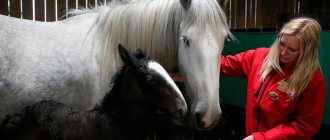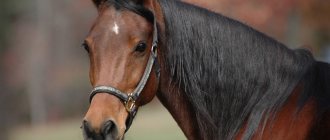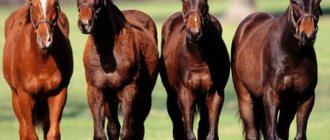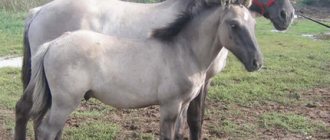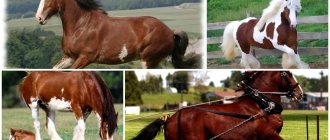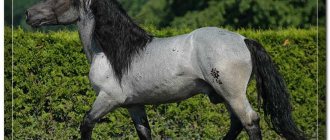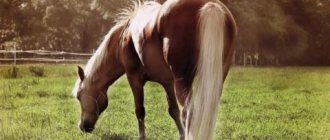The role of the horse in the history of mankind is reflected both in historical chronicles and in masterpieces of fiction. The names of famous horses, starting with the winged Pegasus - a symbol of poetic inspiration, have entered world culture.
For those who love history, the legendary Bucephalus is inseparable from his great horseman - Alexander the Great, and every reading person remembers the name of Don Quixote's horse. Rocinante is a full-fledged character in Cervantes’s great novel.
New name - new destiny
Among the many meanings, facets, and allusions that fill the famous novel, the most important is the idea of the power of the human mind, capable of changing the world around us with the power of imagination, creating a new reality. Just as Alonso Quijano (or Quejado, or Quesado), an ordinary person, turns into a glorious knight, ready for great deeds, as soon as he acquires the title of Don Quixote, everything around him is transformed, receiving a new name.
The copper shaving basin becomes a golden helmet. The peasant woman Aldonza Lorenzo becomes Dulcinea of Toboso - the most beautiful of women, in whose name knightly deeds are performed. A lame, skinny nag turns into a powerful horse, carrying its rider to glorious exploits. She receives her proud name Rocinante (the name of Don Quixote's horse) even before the cunning hidalgo chose a name for himself.
History of the breed
Since ancient times, the south of Russia was inhabited by hordes of steppe inhabitants. One of the main values of this people were horses, which were distinguished by their short stature and amazing endurance. In the 13th-14th centuries, through the joint efforts of the Mongols and Cumans, the herds were united, as a result of which the Nogai breed of horses appeared.
In the 14th century, Cossacks began to settle on the Don, defending the borders of Rus' from the attack of the steppe hordes. For any warrior, his horse played a big role, since human life depended on this animal. To train horses in military affairs and fearlessness, the Cossacks staged raids on hordes. This is how the Don breed of horses appeared.
From the 15th to the 18th centuries, only the Cossacks were interested in improving the breed. The main material for crossing was the Kalmyk breed. At the same time, Arabian, Turkish and Persian breeds were used. The Cossacks wanted their horses to be:
- Brave.
- Hardy.
- Unpretentious.
- Fast.
Much attention was paid to the mental health of the horses and their appearance: they had to be spotless. In the XVIII century
Ataman Platov created the first stud farm on the Don, where they bred and improved the breed.
Particular attention was paid to the uniform, golden color of the horses. The basis for future horses was taken from the special ones from the Trans-Don steppes, from Karabakh and the East
It was the genes of eastern horses that gave the Don horses a beautiful golden color
The basis for future horses was taken from the Trans-Don steppes, from Karabakh and the East. It was the genes of eastern horses that gave the Don horses a beautiful golden color.
Domestic breeders at the beginning of the 19th century. provided more than 55% of all army needs for horses. Of this number, more than 30 percent were Don horses. Over time, new breeds began to be brought to stud farms, among which was the famous Oryol riding horse.
The old Don breed gradually degenerated into a factory breed, and found numerous buyers far beyond the borders of the country. One of the reasons for this popularity was the strategic offensive of the Cossacks on Paris in 1812. During this military action, the Don horses showed all their power, endurance and speed of movement.
Don breed horses are hardy and fast.
The milestones of the breed's development are:
1910 is officially considered the beginning of a new development of the breed, since at that time it received official recognition and high praise from specialists at a Russian exhibition. With the advent of Soviet power, the breeding of Don horses stopped significantly. The situation leveled out only in the 20s, and for this they were looking for purebred individuals throughout the country. The breeders were given a new task - to increase the mobility of horses. For this purpose, animals began to be crossed with representatives of the English purebred breed
As a result, the new foals had strong limbs and high speed of movement. In the 1930s, attention began to be placed on the cleanliness of the breed. Because of this, they began to remove horses obtained as a result of crossing with English thoroughbreds.
As a result, experts came to the conclusion that a horse cannot be considered a Don purebred if more than 1/8 of its ancestors are English. In the 40-50s, representatives of the breed lived in many parts of the USSR. Thanks to this, the performance characteristics of the working horse were improved, and new breeds were created. According to official data, in the 60s the Don breed took second place in terms of quality and number of individuals. At this time, breeders manage to breed taller horses. A new goal is being set - to increase the animal’s motor activity for their participation in sports competitions. But the project was not successful and was closed by decision of the authorities.
Four days of reflection
Don Quixote was convinced: the change that occurred in the owner’s position required a change in the name and his horse. It must correspond to the new rank and its new, glorious field: everyone must remember the name of Don Quixote’s horse - the valiant knight from La Mancha. So he spends several days stretching his imagination, remembering and thinking, going through different options, reworking ready-made words and composing one of several parts. In the end, he settled on the sonorous and noble name Rocinante.
We do not know what the name of Don Quixote's horse was before it became a knight's horse, but for it the new name completely changed the future. According to all the canons of knightly novels, it is the horse that determines the fate of its rider by choosing the road. The name of Don Quixote's horse became famous, meaning a beautiful and strong animal, loyal to its heroic master, although it is more often used with an ironic or parodic connotation.
History of the appearance and development of the breed
The Don breed of horses has an inextricable connection with the history of the Don Cossacks. The first stud farms appeared on the Don back in the eighteenth century. The very first Donetsk dogs were immediately distinguished by their agility and flexibility, which allowed them to easily overcome natural obstacles, perform the sharpest turns, while showing a high level of endurance.
Since, despite all these qualities, they were still very unpretentious in feed and care, and with the proper level of maintenance they could easily live up to twenty years, it was very difficult to come up with the best combat horses for that time.
Beginning in the nineteenth century, the Don Cossack atamans Platov, Ilovaisky and Martynov began to work closely on improving the Don breed. It was from their herds that a new round of development of these wonderful horses began.
This Don chieftain brought the best representatives of Arabian and Persian horses to his factory, using selection and selection methods in breeding.
Then stud farms began to appear everywhere on the Don. In 1776, the Yanov stud farm opened, two years later - the Ilovaisky (A.V.) and Serikov stud farms, and in 1790 the Kuznetsov and N.V. stud farms appeared. Ilovaisky.
The unpretentiousness and endurance of the Don people is evidenced by the following fact: during the Anglo-Boer War, which lasted from 1898 to 1902, all the horses of the English cavalry fell, and two hundred Don horses, which were in the detachment of General French, continued to bravely carry service and endure all the hardships and hardships of wartime.
To further improve this Russian product, the best representatives of purebred riding and Arabian breeds were actively used.
A group of beautiful golden-red riding horses was put on display for the judgment of picky experts. The judges immediately appreciated these wonderful animals and considered them a national treasure of the country. Since that time, Don horses have received official recognition and popular love. They began to be actively used for breeding work to improve the local livestock, and were also actively recruited for army service.
Under the control of the Soviet Horse Breeding Administration on the Don, retired cavalry officers and Don horse breeders carried out active breeding work, which yielded positive results fifteen years later.
Several facts that testify to the extraordinary endurance of the Donetsk people:
- 1946 The Don Cossacks traveled from Salsk to Rostov-on-Don (distance - 200 kilometers) in 18 hours and 25 minutes. And this is at an ambient temperature of 40 degrees;
- a Don mare named Bukvarka's Daughter ran one thousand seven hundred seventy-seven kilometers in fifteen days, without ever stopping for a day;
- a whole group of Don breed stallions covered a distance of 305 kilometers, spending 20 hours on it;
- the record for the distance traveled in one day belongs to a stallion named Skid - 300 kilometers in nineteen hours;
- 1951 To determine the maximum degree of endurance of these horses, the Marshal Budyonny stud farm organized a race, the essence of which was to run 120 kilometers every day for as long as possible. Two weeks later the race was stopped. The horses felt great and there was no point in continuing the test.
This negative trend is due to the fact that former state-owned breeding farms and farms passed into the hands of private capital, which turned out to have no need for them. The Ministry of Agriculture is also not at all interested in these beautiful animals, and all the breeding work to preserve the Don horses lies on the shoulders of a few enthusiasts.
Bibliography:
- A.P. Soldiers. Basics of animal husbandry. — 3rd ed. - M.: Agropromizdat, 1988.
- Animal husbandry // Great Soviet Encyclopedia: / Ch. ed. A. M. Prokhorov. — 3rd ed. - M.: Soviet Encyclopedia, 1969-1978. (Retrieved April 5, 2012)
- Animal husbandry - Wikipedia
- Animal husbandry // Encyclopedic Dictionary of Brockhaus and Efron: in 86 volumes (82 volumes and 4 additional). - St. Petersburg, 1890-1907.
Meaning of the name Rocinante
It’s not for nothing that the cunning hidalgo spent a lot of time looking for the right name for his horse - it’s hard to forget the name of Don Quixote’s horse. Its name is sonorous and ambiguous, explaining, first of all, as the owner wanted, the significance of the change in his status: the horse, which was previously an ordinary nag, becomes “the best of the nags.”
Rocinante is a pun made from combining two words. The first - Rocín - exists in several Romance languages, meaning a working, mongrel horse or, figuratively, a rude, illiterate person. The second part - ante - can be a separate word meaning “before”, “before”, “previously”, or a suffix that defines circumstances, that is, in this case, doing something like Rosin. The combination produces many meanings: “the likeness of a horse,” “what used to be a horse,” or “what the former nag became,” “the nag that is ahead of everyone,” and the like.
Content Tips
Don breed horses can be kept not only in stables, but also in herds, where, in the process of free grazing, an individual can gain the muscle mass it needs. The daily feeding volume for an adult horse should be at least 2-3% of its body weight. The more a horse moves, the more feed it needs to consume to regain strength. The horse's food and water should always be fresh.
Donchak do not tolerate wilted grass well. The optimal food for them is oats, vegetables, hay, and salt. Feeding is carried out three times a day, and in between meals the horse must move actively. It should be remembered that activity is possible only 2 hours after eating, since the process of digesting what is eaten in this breed takes exactly this period of time.
In addition to feeding, it is important to care for your horse daily, as its health depends on it. The coat should be brushed, the eyes and nostrils should be wiped with a damp cloth every morning, the mane and tail should be combed, after walks the legs should be washed, and the hooves should be cleaned with a special hook.
Often, to prevent a horse from spraining its ligaments, its legs are bandaged with elastic bandages.
Don Quixote's double
Anyone who reads Cervantes' novel for the first time will be struck by the similarity between the horse and its rider. This is confirmed by many literary scholars who have devoted entire volumes to the study of this book. There is undoubtedly an external similarity: both the knight and his steed are characterized by incorporeality, denying vulgar materiality and belonging to a higher, spiritual world. The tests sent by fate are also similar: Rocinante is subjected to ridicule no less than his valiant master, and the beatings inflicted on him are just as painful and noticeable.
There is one more quality common to the two characters, which has a sublime meaning. Both Don Quixote and Rocinante display abilities in their new lives that were unavailable in the past. A little horse, from which, due to its thinness, the bones stuck out in all directions, having become a knight's horse in an imaginary world, becomes capable of actions that perhaps exceed its capabilities. Despite the clumsy fall at the beginning of the novel, this is Don Quixote’s faithful and resilient horse, whose name was Rocinante - “ahead of everyone else, the first nag in the world.”
How to maintain and care
The main rule of communication
The Don horse is unpretentious. But because of her character, it is sometimes difficult to deal with her.
For representatives of this breed, there is one cherished rule - not to pay much attention to them. Otherwise, the Donetsk people begin to become impudent. And no longer behave affectionately, but rather the opposite.
Nuances of care
After each training session, the horse's legs are washed under cool water. It is recommended to additionally lubricate them with special cooling and insulating creams.
The hooves are lubricated with a special varnish. And from time to time they are treated with hydrogen peroxide. This way they will not crack and cause pain to the animal.
Once every six months, the Don horse is given new horseshoes. The cost of such a procedure is about 2000 rubles. Hoofs are cleaned once every two months. Price – 500 rubles. It is advisable to have a specialist do this.
Tip: before each workout or work, moisten the cotton wool with water. And thoroughly rinse the animal’s nostrils. After this procedure, the nose is cleaned. And the horse breathes better.
Additional requirements
It is important to encourage a horse or horse of the Don breed. These are quite vulnerable animals.
And at a young age they are also difficult to manage.
Before training, the pet is given a carrot or an apple each time. This way he will begin to understand that good gaits will reward him with goodies. The method is used to strengthen control. And I must say that it works.
The area of the stall for keeping horses of the Don breed should be 12 square meters per individual. Be sure to have a large window without broken glass, and a feeding trough with a drinking bowl. If possible, “balconies” are also installed in the stables - exits to the street.
In winter, you need to put a thick stall blanket on the animal. In bad weather - fleece.
From late October to mid-December, blankets that are less insulated than winter blankets are usually used. If a horse gets used to standing in a stall in a winter blanket at a temperature of 5 to 15 degrees, then in cold weather it will simply freeze.
Common noun
The significance of the novel about the adventures of the knight from La Mancha is confirmed by its worldwide fame and the total number of circulations around the world. There is no need to explain what “quixoticism”, “fighting windmills” or “Knight of the Sorrowful Counter” is. The images of Don Quixote, Sancho Panza, and Dulcinea are embodied in many films and theatrical productions in drama and musical theaters.
There is no need to remind the whole world what the name of Don Quixote's horse was. Any emaciated or extremely thin horse invariably receives the ironic nickname Rocinante. But this word, according to Don Quixote, is indeed beautiful and sonorous, valued by naming professionals without ironic overtones, simply as a famous horse name. Many hippotherapy centers or equestrian schools are named after Don Quixote’s faithful companion.
Breed Features
The Don Horse is a representative of the group of harness horses, which was bred on the territory of the modern Rostov region. Her birth occurred due to the mixing of blood of wild steppe herds, Turkmen, Karabakh, Akhal-Teke and Persian horses. Long-term selection work allowed these animals to increase their height quite significantly, losing the usual appearance features of their wild and eastern ancestors.
You will learn a lot from the video “All about the Donetsk people”.
These horses were very popular among the Don Cossacks, who put a lot of effort into breeding the Don people and their further development. Thanks to the Cossacks, the Donchak received its endurance, lightness and courage, for which this breed is famous. In addition, the famous red coat, a distinctive feature of all Don horses, appeared thanks to the Cossacks. Using horses in battles, the Cossacks tried to achieve one color of the animals so that they would look like a large mass capable of intimidating the enemy.
Origin story
As we said earlier, in the open spaces near the Don River, people have since ancient times used the steppe horses living there. But only with the arrival of the Cossacks there was a sharp increase in interest in the development of local horse breeding. The great need for high-quality horses capable of carrying heavy loads while maintaining speed and unpretentiousness led to the fact that the first stud farms began to appear in the Don expanses. The basis of the new breed bred there was the various horses that the Cossacks inherited after several Turkish companies.
The Don owes its beauty and grace to the eastern horses, whose blood was gradually mixed with them. Thus, Arabian, Akhal-Teke and Persian horses were used. For the first time, these animals were appreciated only in 1910 at the All-Russian exhibition. The Donchak, being a model of an army horse, has gained considerable popularity in many sports, but now they are mainly used to improve local breeds, since with the collapse of the Soviet Union, the breeding of Don horses went into decline.
Exterior
The Don breed of horses has a red color, which can range from light to dark. The legs of these animals are quite long, matching the same body and straight back. There are 4 varieties of this breed, let's talk about them separately.
- Persian, formed from the blood of Persian and Turkish horses. They are distinguished by their tall height (160-165 cm) and refined head features, wide neck, and chest. They have soft golden fur and mane.
- The East Karabakh horse is somewhat shorter than its relatives (up to 160 cm). The body and head are more rounded. These horses are dominated by dun color in color.
- The eastern massive variety is distinguished by very high growth and body weight (165-170 cm at the withers). But thanks to the elongated lines, the animal’s body does not seem massive. These horses are usually red.
- Saddlebred is a light, tall horse that is most often used for military or sporting activities. They are distinguished by the absence of a golden shimmer, which is found in the fur, tail and mane of other varieties.
Character
The Don breed of horses has a rather complex character. The fact is that their origin and admixtures of eastern blood make these animals quite active, even “groovy.” It will not be very easy for a beginner in horse riding to cope with an angry Donchak. From time to time they can “play” with their rider, marking bouts of good mood with “goats” and “candles”. This is also worth considering when choosing a rider for such a horse.
However, it has been noted that the majority of Don horses have a rare selectivity and loyalty to one rider they love. An animal can happily help a chosen person, but show malice towards all others. At the same time, most animals are easy to train if you start training the foal in time. In addition, representatives of the Don breed are quite disciplined animals.
Intrabreed lines and types
As with all other breeds, the Don breed has its own intra-breed types and main lines.
Riding type of Don horses
Bolivar Line
One of the most valuable breed lines belonging to the sporting type. The horses are strong, with good bone and correct structure, ideal for both work under saddle and light harness. All young animals of this line receive good exercise, are raised in herd conditions and are distinguished by their friendliness and people-oriented nature.
Line Peony - Chelna
The line of Peony and Chelna belongs to the eastern type of breed. The founder of the line, Peony, was born in 1906. Peony's descendants form the main breeding core at the Budennovsky stud farm. Chelny was born in 1912. His descendants are also used in the Budyonny stud farm. Horses of this line are distinguished by their large stature, massiveness, and bonyness, but often have a rather soft back and insufficient dryness of the legs, which is a disadvantage of the exterior. The best descendants go back to Cheln’s son, Korolk.
Peony Line. Golden brown Tibul
East Karabakh type of Don horse
Horses of this type are distinguished by a deeper chest, short stature, stockiness, more rounded shapes and a harmonious physique. The neck of horses of the eastern type is long, with a beautiful bend, and well-defined withers. The East Karabakh type of horse was formed from the descendants of the beautiful mare Agave, as well as the outstanding sires Bordeaux and Periwinkle.
Funny Line
The line of the Zabavnik also belongs to the eastern type. The stallion was born at the Issyk-Kul stud farm in 1925 and left behind numerous offspring, distinguished by their massiveness, stockiness, and long lines of neck and back. Horses of the Zabavnik line are also of the eastern type and are often used in driving.
Massive rock type
The massive type of rock is represented by the Rezvoy line. The stallion was born in 1912 and its use in the Don breed was very important. He had a rather dry body structure, was a thoroughbred, with good movements and had a bright type of Don horse. He passed on to his descendants not only large stature and massiveness, but also good muscles, endurance, and proper bone structure. In the Rezvoy line there are almost no such defects as sabering of the limbs, shortness, incorrect angle of the shoulder joint, or soft back.
Patron Line
The brown stallion Patron was born in 1907. His descendants played a big role in the formation and spread of massive horses. Horses of the Patron line are distinguished by their unpretentiousness to living conditions, efficiency, and strength, but the disadvantages include excessively long lines of the body, a soft back and a general dampness of the body structure. However, these shortcomings do not affect the overall performance of the Donetsk team. Patron's descendants show good agility on the racetrack.
To main
All authors
Home → Miguel de Cervantes → Don Quixote
CHAPTER II,
which treats the first exploits of Don Quixote.
Having successfully completed all preparations for a new way of life, Don Quixote was burning with impatience to get down to business as quickly as possible. He considered himself responsible for all the evil that loomed over the earth and was increasing every hour, as it seemed to him, thanks to his inactivity. All unpaid debts, unrevenged grievances, unpunished crimes lay like a leaden weight on his soul, and he sought to cast off this weight as quickly as possible.
And so, at the dawn of one beautiful July day, which promised to be very hot, Don Quixote, without telling anyone or being noticed by anyone, got dressed, saddled his Rocinante, jumped into the saddle, with his visor lowered, with a round shield in one hand, with a spear - in another and with a sword dangling at his side, he rode out through the backyard of his house, rejoicing that all his household were still sleeping, and he was thus spared the need to enter into explanations with them regarding the purpose of his departure.
However, not having had time to drive a few steps away from the house, he suddenly remembered with horror that, in essence, he did not have the right to call himself a knight and enter into a fight with real knights, since he had not yet been initiated into this noble title. He also remembered that even if he were to be initiated, he should limit himself to using one “white” weapon, that is, without a motto on the shield, until he distinguished himself by some special feat.
This thought confused him to such an extent that he almost turned back; but, after thinking a little more, he decided to ask the first knight he met to perform the rite of passage over him, as many of his favorite heroes did. Having calmed down at this thought, he boldly continued the path chosen, in fact, not by himself, but by his horse.
As for the “white” weapon, he promised himself that it would not remain white for long, and at the very first battle with someone he would earn himself such a motto, the like of which had never been seen in the world.
He went wherever his Rocinante pleased for the simple reason that he found it most suitable for an adventurer. Having thus surrendered entirely to the power of his horse, he reasoned to himself:
“When the historian of future centuries begins to describe my unparalleled exploits, he will probably begin like this: “As soon as the luminous Phoebus began to scatter the golden locks of his luxurious hair around the still sleepy face of the earth, as soon as the early birds, shining with a thousand colors, began to greet with their melodious voices the appearance of the pale - pink Aurora, who left her bed to illuminate the sky of glorious Castile with her sparkling smile, - like the famous knight Don Quixote of La Mancha, shaking off the shackles of sleep, saddled his faithful Rocinante and set off along the ancient and glorious Montiel Valley.
It was along this valley that our four-legged friend was carrying our hero at the described moment.
Taking a brilliant look at the horizon spreading before him, Don Quixote said aloud:
- Oh, happy age, which is destined to see my glorious deeds, worthy of being minted on bronze and marble and reproduced with brush and pen, so that the memory of them will be preserved forever for the joy and instruction of the most distant posterity!.. Oh, you glorious historian, to whom I will have the immense happiness of telling the world about my great adventures, I pray you - do not forget my faithful Rocinante, dear comrade in my difficult journeys!
Don Quixote dreamily bowed his head on his chest and seemed to freeze in this position for some time.
But then he suddenly perked up again and straightened up. Taking a deep breath and shaking his spear, he enthusiastically shouted throughout the entire valley:
- Oh, Dulcinea, incomparable mistress of my heart, enslaved by your beauty! What trials are you subjecting the poor heart of your knight by your stern refusal to allow him to behold your divine beauty! Don't you feel sorry for your faithful and humble admirer?
In this spirit he wandered for a long time, repeating entire pages from the works of his favorite authors and decorating them with his own inventions. At the same time, he did not notice that the sun had already risen high and threatened to melt that small particle of brain that could by chance still be preserved in his long and narrow skull.
He sat on the back of his Rocinante all day without encountering a single adventure. This upset him extremely, and it was quite understandable if we take into account his desire to quickly show the world the first feat of his courage.
Some chroniclers claim that Don Quixote's first exploit was in the Lapis Gorge; others claim that he began a series of immortal deeds with battles with windmills. But from the sources I have at hand, it is clear that he, having wandered from dawn to dusk and not encountering a single adventure, was finally so exhausted from hunger, thirst and fatigue that he could barely stay in the saddle. His faithful Rocinante also could barely move his bony legs and stumbled at every step.
Looking around in all directions with the intention of finding some kind of shelter where he could rest and refresh his weakened strength, he finally saw a tavern to the side, to which he hastened to direct his Rocinante. One can imagine how he immediately perked up at the sight of the saving shelter, just like a half-dead traveler who had wandered for a long time through a sultry and barren desert and from afar saw a green oasis with a group of luxurious palm trees and a source of fresh water.
At that time, two females, belonging to a society of muleteers who had stopped here on their way to Seville, were busy at the gates of the tavern.
Since our hero was hovering in a fairy-tale world of fantasies and dreams, inspired by reading stupid books, the pitiful tavern was immediately transformed in his eyes into a magnificent castle, with golden-domed towers on all four corners, with ditches and drawbridges - in a word, with with all the accessories of those knightly dwellings about which he had read so much.
Stopping at some distance from the imaginary castle, Don Quixote expected that a dwarf would appear between the battlements of the walls and announce the arrival of a knight with a trumpet sound. But since there was nothing of the kind, and the exhausted Rocinante was impatiently rushing to the stable, the proximity of which he already sensed, our hidalgo involuntarily drove closer and saw the mentioned women. It goes without saying that they too seemed to him to be noble ladies strolling at the gates of their castle.
At this time, a shepherd passing by blew his horn, calling to his scattered flock, and this gave Don Quixote reason to imagine that, in fact, they were blowing it in honor of his approach to the castle.
Spurring Rocinante, who was already running at full speed with his skinny legs, he rather bravely rode up to the women, who started to run away from him, frightened by his warlike appearance.
Don Quixote raised his visor as far as possible, so that his thin, sweaty and dusty face was revealed a little, and said in a quiet and, if possible, pleasant voice:
- Noble ladies, do not run away and do not fear any insult from me. The laws of chivalry, of which I am a member, prohibit insulting anyone, much less such noble ladies as you.
The “noble” ladies listened to him with their mouths open, trying to look under his poorly held visor. When he called them noble, they burst out laughing and grabbed their sides.
- Why this laughter? - Don Quixote continued sternly. — Beauty is primarily characterized by modesty, and it is indecent to laugh at something that is not funny at all. However, rest assured that I am not saying this with the intention of insulting you or darkening your joyful mood; on the contrary, I am always ready to serve you with everything I can.
This speech, combined with the strange appearance of the speaker, brought the gaiety of the women to such proportions that Don Quixote was completely at a loss.
It is unknown how this whole story would have ended if the owner of the tavern, a remarkably fat, good-natured and peace-loving man, had not come out.
At the sight of a stranger armed with old junk, the fat man himself almost laughed, but managed to curb himself and said with a polite bow:
“Mr. Knight, if your honor would like to stay with me, you will find everything a traveler needs, with the exception of a bed, since, unfortunately, I don’t have a single one left.”
Don Quixote, who at first mistook the innkeeper for the manager of the castle and was flattered by his politeness, answered just as politely:
- Mister castellan, I am content with little:
“Weapons are my outfit, And battles are my rest!”
- Understand! - exclaimed the fat man. - In that case, you can answer:
“The rock shall be your bed, And the waking life your sleep.”
If this is so, then you can safely descend to earth and enter my house, in which you will find complete opportunity to spend not only one night, but the whole year.
Don Quixote silently nodded his head, and the innkeeper hurried to support the stirrup to help his guest get off his horse, because it was very difficult for the bravest knight, who had been sitting in the saddle for twelve hours, burdened with the weight of armor and, in addition, who had not eaten anything since the previous evening. .
Having set foot on the ground, Don Quixote first of all asked the owner of the tavern to take care of his horse, noting that of all the horses in the world, Rocinante is undoubtedly the best. The tavernkeeper, apparently, although he did not completely agree with this opinion, nevertheless, immediately took Rocinante to the stable.
Returning to the visitor, the owner saw that he had obviously already made peace with the women who ridiculed him, who vied with each other to help him free himself from armor and weapons. The armor and cuirass came off quite easily; but when it came to the ill-fated helmet, it turned out that the green ribbons with which it was tied were pulled into such a knot that it could only be cut and not untied. Don Quixote did not want to cut it for anything and declared that he would rather sleep all night in a helmet, which, by the way, made our knight the most hilarious figure imaginable, rather than spoil this decoration of his head.
During this fuss, still continuing to mistake the women courting him for noble ladies and owners of the castle, our hero quoted the following quatrain from an old Spanish song:
“Which knight was received by the Beauties as I was? Where did the ladies serve him like that And take care of his horse?”
Then he continued in his usual speech:
“The name of my horse is Rocinante, and I myself am Don Quixote of La Mancha, your most humble servant, lovely ladies.” I had sworn not to reveal my name to anyone until I had accomplished some great feat, but the desire to link the song about Lancelot to my current situation forced me to change this oath. I hope the time will come when you, graceful senoritas, will hear about the glory of my name resounding throughout the world; but both now and then I will consider it my greatest happiness to serve you with my weapons and the strength of my muscles.
Not accustomed to hearing anything like this, the women looked at Don Quixote with increasing surprise and did not know what to answer him. Finally, one of them decided to ask him if he wanted to have a snack.
“I won’t refuse,” answered Don Quixote. “For whatever your lovely hands, senoritas, give me now, I will be very grateful.”
Unfortunately, it was Friday, and there was nothing in the tavern except the remains of dried fish called “speckled fish.”
The women asked him to be content with this modest dish, since everything that was available before had been destroyed by other travelers.
“It doesn’t mean anything,” Don Quixote said kindly. “I will be satisfied with this too, just to satisfy my hunger and strengthen my strength, and I assure you that you need quite a lot of it in order to wear armor with honor and perform great feats.”
Wanting to give the knight the pleasure of dining in the fresh air, they set a table for him in front of the tavern, under a large tree, and served him a couple of very bad fish, dry as splinters, and a piece of coarse black bread.
Don Quixote, however, ate with great appetite, although the very process of eating gave him enormous labor, by the grace of the helmet that remained on his head, which prevented him from opening his mouth wide enough with its visor and chin.
Seeing how awkward it was for him to open his mouth, one of the women took pity on him, began cutting the fish into small pieces and feeding him like a child. When he wanted to drink a glass of water, it turned out to be positively impossible, and the poor knight would never have been able to quench his thirst, which had become positively unbearable after the disgusting fish, if the owner of the tavern had not thought of putting a long reed pipe into his mouth, and the other end put it in a mug of water.
Don Quixote endured all these inconveniences with stoic patience, just so as not to cut the ribbons of his helmet.
A shepherd who came into the tavern at that time began to whistle something, and this finally convinced our knight that he was in a noble castle, where they were delighting his ears with beautiful music, and he was being treated to a magnificent dinner; whereby the disgusting fish seemed to him like a wonderful trout, the bad bread like a tender cookie, and the well water like old wine of the highest quality.
Having thus, with the help of his imagination, colored the unsightly reality, he was very pleased with the result of his first trip and rejoiced at his decision to become a knight errant. The only thing that worried him was that he had not yet been knighted, and therefore, in essence, did not yet have the right to any feats.
Next page →
← 1 page Don Quixote
3 pages → Pages:
2
Total 122 pages
© “Online-Read.RF”, 2017-2022 Feedback
